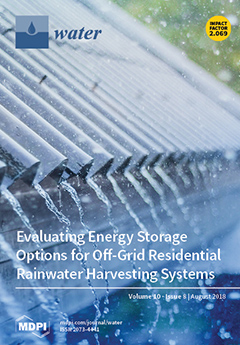Pollution abatement through phosphorus and nitrogen retention is a key ecosystem service provided by streams. Human activities have been changing in-stream nutrient concentrations, thereby altering lotic ecosystem functioning, especially in developing countries. We estimated nutrient uptake metrics (ambient uptake length, areal uptake rate,
[...] Read more.
Pollution abatement through phosphorus and nitrogen retention is a key ecosystem service provided by streams. Human activities have been changing in-stream nutrient concentrations, thereby altering lotic ecosystem functioning, especially in developing countries. We estimated nutrient uptake metrics (ambient uptake length, areal uptake rate, and uptake velocity) for nitrate (NO
3–N), ammonium (NH
4–N), and soluble reactive phosphorus (SRP) in four tropical Cerrado headwater streams during 2017, through whole-stream nutrient addition experiments. According to multiple regression models, ambient SRP concentration was an important explanatory variable of nutrient uptake. Further, best models included ambient NO
3–N and water velocity (for NO
3–N uptake metrics), dissolved oxygen (DO) and canopy cover (for NH
4–N); and DO, discharge, water velocity, and temperature (for SRP). The best kinetic models describing nutrient uptake were efficiency-loss (R
2 from 0.47–0.88) and first-order models (R
2 from 0.60–0.85). NO
3–N, NH
4–N, and SRP uptake in these streams seemed coupled as a result of complex interactions of biotic P limitation, abiotic P cycling processes, and the preferential uptake of NH
4–N among N-forms. Global change effects on these tropical streams, such as temperature increase and nutrient enrichment due to urban and agricultural expansion, may have adverse and partially unpredictable impacts on whole-stream nutrient processing.
Full article





